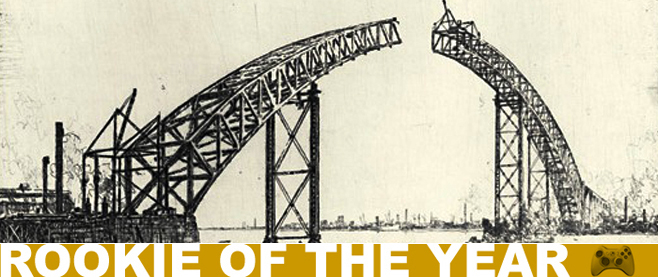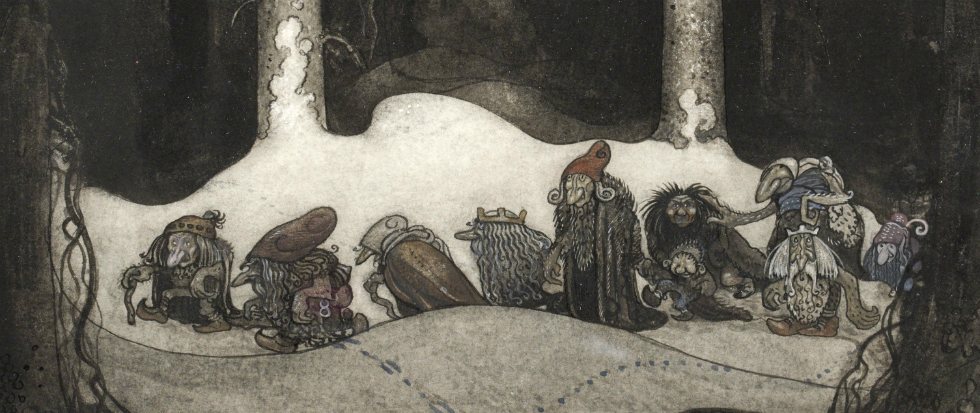
Videogame Preservation Is, And Will Always Be, A ‘Now’ Problem
Longtime fans of mine know how much I champion game preservation in its many forms. Each year, the game industry grows on the shoulders of what came before, and each year, more games are being forgotten. Right now, many people in the games community are preparing their game of the year lists, but I have something else on my mind. A certain event happened lately that made me all the angrier about how little this industry — from the people who make the games, to the consumers and journalists around it — care about game preservation.
1.26
That number listed above is the reason for this post and the accompanying video, and I’ll tell you why it’s important in a bit. Videogame preservation has always been a tricky topic to explore compared to preserving other mediums.
The videogame industry is arguably the fastest growing medium at the moment. In the span of 30 years, we have gone from 8-bit games to titles pushing graphical fidelity to almost real-life. Games have gone from asking us to save the princess to titles exploring life, depression, sexuality, war and much, much more.
Given the speed of the industry’s growth, it has been impossible to set standards on elements like unionizing, game preservation or even what good game design actually is.
The speed of growth has been a major part of the problem of game preservation. Each new platform cycle brings new technologies and hardware, in turn making older hardware obsolete. When that hardware becomes obsolete, it takes the games along with it.
Retro Gaming
Playing retro games legally becomes more expensive with each year. You need to find working copies of the console, peripherals, a TV that can play it (or get special devices to convert to HDMI) and you have to ensure they all remain working. For places like The Museum of Art and Digital Entertainment, this necessitates shelves of backup legacy consoles to use for parts or to replace broken hardware, MADE founder Alex Handy told me on a cast.

There are people and companies who develop games and hardware for legacy consoles, as well as developers keeping the spirit of retro games alive like Yacht Club Games, Joymashers and Locomalito, among others. Still, the general consumer’s ability to experience retro games legally shrinks every year. And with that said, that takes us to the heated part of this debate.
Piracy vs. Preservation
It is no secret in the game industry that there are ways to play older games without needing legacy consoles or game servers for MMO titles. The first NES emulator was released back in 1997. The original emulators were used primarily for PC gamers to get access to NES games. Over the years, we have seen emulators on smartphones, people “bricking” their systems to play classic games, and many more emulators on PC.
For obvious reasons, I’m not going to name any of them, but chances are that several of you reading this right now know of or have played an emulator in your time. While having an emulator is not illegal, the code associated with a ROM is the property of the licensed holder, and possessing that is illegal.
Despite that, it hasn’t stopped gamers from playing these games and programmers developing more powerful (and far reaching) emulators.
For many people who are against emulation, they lump it into the same category as pirating modern games. The other point is that it does devalue the property if the developer or license holder wants to make those games available at some point in the future. Many people also view emulation along the same lines as no-CD or no-DRM cracks for games, allowing people to play pirated copies of games without having to pay for them. And there are people who, given the choice, will pirate a game no matter the quality, the developer or their own financial situation (believe me, I’ve met them).
Developers for years now have talked about how piracy impacts games, and for smaller developers who need every sale, finding their game on a pirate site or seeing illegally gained keys being sold are not good to say the least. This is why many developers are against emulation in any form, and feel that it’s just a way for someone to score free games.
The defense that has been brought up has been on the preservation side. Many older games that are emulated are not available in the open market anymore. For the as-for-mentioned MMOs, or even games with unique multiplayer modes, once those servers have been turned off by the developer or publisher, you literally cannot play those games without the use of a cracked version. The games that are being brought up for this discussion are not those actively being sold by the IP holder, which means there is no first-party market transaction going on.
The last time I spoke about game preservation, I did not give room to discuss the valid criticisms against emulation, something we’re going to rectify now.
The Money
At the end of the day, it always comes back to money and cost. During the last decade, one of the more promising features in consoles was backward compatibility — with each console maker providing the means of playing the previous generation. Fast forward to present day, and things are very different.
At this time, the Nintendo Switch has no Virtual Console to the same extent as the Wii or Wii-U. The PlayStation 4 offers no compatibility with previous consoles, and the only way to play legacy games is to re-buy their PSN version (if there is one) or get PlayStation Now. Microsoft continues to add games to its backward compatibility list for the Xbox One.

When asked about the decline in backward compatibility, Sony has stated that the cost has become too great to justify the expense. When you develop a console to have backward compatibility, you are essentially designing two sets of hardware: something that features new hardware but also continues to have the necessary parts from the older consoles.
Another monetary concern is the one that comes with any IPs out there — the person or company that owns them has an investment in them. Regardless of the popularity of the property, emulation does reduce its value, which can be a factor if someone wants to use or sell that property in the future.
One of the possible reasons why graphical fidelity has grown so much this generation could be attributed to console makers focusing entirely on the future of games with the newest technologies instead of on the past. For many consumers out there, they are just not interested in playing older games.
This is further exemplified when we look at the other criticism of emulation.
Play or Watch
A common and very valid argument that gets brought up when talking about preservation vs. piracy is a basic one: Why should you need to emulate games when there are videos out there? Pick a game, and someone, somewhere has footage of it being played. I’ve found footage of video games from the ’70s that anyone can load up and watch to see how videogames were played back then.
For games that are more story-focused, the gameplay for some people is irrelevant to why someone wants to find the game. We’ve talked before about how let’s plays and streamers have impacted the consumer when it comes to narrative-based titles. Once someone watches the entire story of a game, would they even want to play it at that point?

There’s also the education factor that gets brought up. If someone wants to study a videogame for whatever reason, archival footage should be just as good as someone watching an old movie.
In many ways, the videos on these titles are usually those that beat the entire game, which show off game mastery as well. Thanks to speedrunners, you can watch people go for 100% completion, or the quickest way possible to success from the comfort of your own home.
With that said, I want to talk about why this argument, in particular, doesn’t work in my opinion when it comes to game emulation.
The Feel of Gameplay
No matter what anyone says, videogames are an interactive medium; hell, that’s the reason why they are unique in the first place. Watching a game and playing it are two different experiences, and something I’ve learned all too well lately.
Right now, I’m working on my second design book — A Deep Game Design Dive Into Jumping. The purpose of the book is to chronicle and discuss the history of jumping and platforming from a game design perspective.
Jumping is a mechanic that looks very simple on the surface, but there are multiple elements that go into defining a good platformer vs. a bad one. A large part of that is the variables that impact the action and motion of jumping that I go into detail about in my book.
With that said, it’s time for an important message — YOU CANNOT LEARN GAME MECHANICS BY JUST WATCHING FOOTAGE. If you were to show someone five different platformers, a viewer will not be able to understand the difference in feel that can only happen when they’re behind the controller. Just going through different indie games, the jumping and platforming are vastly different between them.
For a modern example you can look at Super Mario Maker and how the four entries used (Super Mario Brothers 1, 3, World and New) are vastly different in their UI and the feel of controlling Mario.

Many videogames that feature multiple systems of design cannot be understood simply by watching footage. No one could ever figure out how to play a game like Europa Universalis by just watching videos without commentary. This is why many developers and consumers get it wrong about what makes the Dark Souls formula work.
With all that said, it’s just not about the design that poses a discussion about game preservation, but what it all means to the game industry.
Art or Product?
We’re not going to be getting into what is the never-ending debate about videogames, but it’s important to understand the mindset of art vs. a product. At the end of the day, the game industry is consumer-driven. If people don’t buy your game, then you’re not going to be in business for long.
For many consumers, videogames occupy the same space as hardware and products — once you’re done with X, then you get rid of it and wait for the better version. We have been conditioned to do that in the tech industry; each year, we’re given a shinier smartphone or a more powerful video card to chase after.
Given how many games are released daily, it’s at the point where it may be impossible to keep track of all the games coming out, even the ones you’re excited for. This has also led to the issues of game devaluation — why should I buy your game at full price, when I can not only wait for a sale, but I have all these other games to play?
With the wide range of games being released yearly, only a fraction of them are going to be remembered in years to come. Even then, said games can easily be forgotten in terms of what’s popular now.
However, videogames are an art form in their own right. Just as someone can trace the history of movies or cars, we can see the evolution of design over the last 30 years. Just because no one wants to remember bad games doesn’t discount their place in how game design has grown.
The Future of Game Preservation
What infuriates me about this issue is that this should not be a problem in the game industry. If I can legally watch movies from 50 years ago, or read books over 200 years old, why the hell can’t I play a video game from 15 years ago?
If everyone in the industry, including people who call themselves “true gamers,” would rally around game preservation, this could easily be solved and allow us to take measures to properly archive games to preserve their art and history.
Let me end things here going back to that number at the start. A friend of mine who heard about my issues with finding classic games to study for my book showed me their emulator collection of SNES titles. The folder contained literally every game for the SNES — a treasure trove for someone like me to study.
I was curious about how big the folder must be in order to store all that history, and the grand total was 1.26 gigs. To put that in perspective, I could make a 15-minute video of myself just making random noises, and it would take up more space than a collection that arguably holds some of the most treasured games of the 2-D era.
This is not a hard problem to solve. The longer we wait to start setting up measures, the more difficult this task will become. I’ve been thinking about this issue since the late ’90s, before a lot of people even thought videogames held any value, and things haven’t gotten any better.
For everyone right now who is excited about Kingdom Hearts 3 or getting ready to declare Fortnite or Red Dead Redemption 2 your game of the year, if you don’t care about game preservation, then all you’re doing is getting excited about the best trash to throw out in 15 years.





